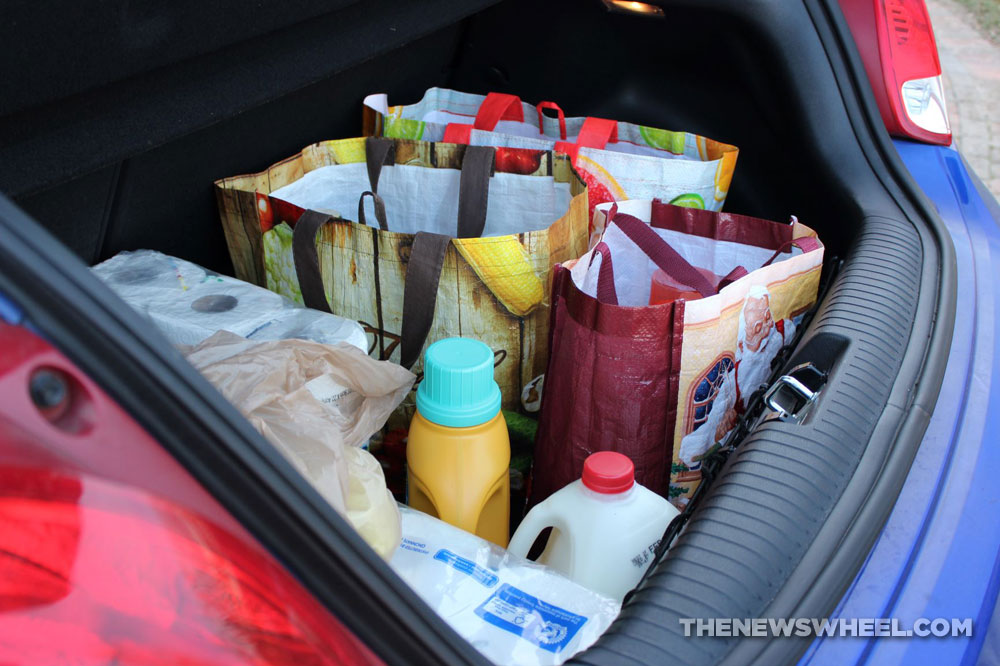
As temperatures heat up during the summer, it can be harder to keep chilled food cold, whether you’re carrying groceries while running errands or transporting a dish to a summer cookout. Keeping cold foods like ice cream and raw meat chilled is crucial — yet very challenging when the summer heat nukes the contents of your car. Want to know the best ways of keeping food cold in your hot car? Here are some ideas.
Don’t Spill the Beans: Tips for transporting grocery bags in your car without spilling their contents
Buy frozen foods and meat last
Wait until right before you hit the checkout to grab must-chill perishables. It’s hard to keep meat and frozen fish cold in your car if they’ve already sat in your shopping cart for an hour!
Use insulated bags
Instead of using disposable plastic or paper grocery bags, put your cold groceries in reusable, zippable grocery bags with insulation linings. Keep a bunch in your car for whenever you need them.
Pack the food tightly
The less empty space in the bag, the better. This will help keep the air temperature in the bag colder so less food thaws. Any foods that could melt or cross-contaminate should be wrapped in a plastic bag before being packed in the reusable grocery bag and put at the bottom underneath everything else. Don’t reopen bags unless necessary; keep them sealed as long as possible.
Park in the shade
Running other errands in town with groceries in the car? Look for parking garages or tree-covered spaces where the shade will keep your vehicle cool. Otherwise, your car could compromise food safety.
Keep food out of direct sunlight
Keep the grocery bags in the trunk. If you drive an SUV, truck, or minivan without an enclosed trunk, invest in a cargo cover that you can pull over the groceries in the back. At least put a light-colored blanket or reflective sun shade over the groceries to shield them from the sun’s rays.
Use ice packs
Grab a handful of reusable frozen packs from home before going shopping. You can stuff these in the sealable grocery bags when you’re loading the groceries into the trunk. If you don’t own ice packs (which you should!), keep filled plastic water bottles in the freezer. Did you forget to bring freezer packs with you? Buy some cheap bags of frozen vegetables at the grocery store.
Safety Risk! What happens when you leave water bottles in a hot car?
How cold is cold enough?
According to Diane Van (Food Safety Education Staff Deputy Director of the USDA Food Safety and Inspection Service), perishable foods requiring refrigeration need to be kept at 40 degrees Fahrenheit or cold to prevent spoilage at all times.
She notes that perishable foods should be moved from the freezer or fridge immediately to a portable cooler. You should make sure your cooler is filled to capacity; if the cold foods don’t completely fill the cooler, add more ice until the cooler is packed tightly.
If you are worried about keeping the proper temperature of the cooler, remember to pack an appliance thermometer and check that the cooler registers at the ideal temperature: 40 degrees Fahrenheit or below.
Aaron is unashamed to be a native Clevelander and the proud driver of a Hyundai Veloster Turbo (which recently replaced his 1995 Saturn SC-2). He gleefully utilizes his background in theater, literature, and communication to dramatically recite his own articles to nearby youth. Mr. Widmar happily resides in Dayton, Ohio with his magnificent wife, Vicki, but is often on the road with her exploring new destinations. Aaron has high aspirations for his writing career but often gets distracted pondering the profound nature of the human condition and forgets what he was writing… See more articles by Aaron.